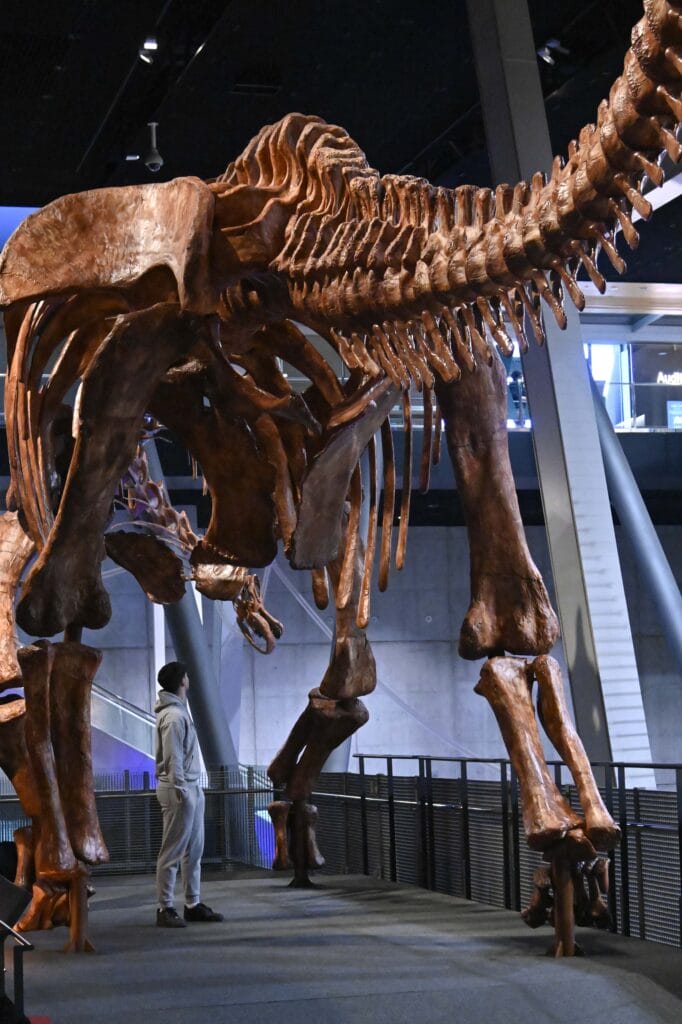Barcelona, 25 October 2023. The Deputy Director General of the ”la Caixa” Foundation, Elisa Durán; the Director of the CosmoCaixa Science Museum, Valentí Farràs, and the palaeontologist co-discoverer of the Patagotitan mayorum and researcher at the Egidio Feruglio Palaeontological Museum (MEF), José Luis Carballido, have presented Dinosaurs from Patagonia, a journey to the Patagonia of the Mesozoic Era to get an up-close look at the diverse dinosaurs that populated that land.
The exhibition created by the MEF opens to the public tomorrow at the CosmoCaixa Science Museum, where it can be seen until 2 June 2024, marking its first stop in Europe. The display takes a look at the evolution of the different types of dinosaurs that inhabited Patagonia more than 200 million years ago and highlights their great diversity.

Visitors will be able to walk among life-size replicas of 13 species of dinosaurs that tell us about the evolution of carnivore and herbivore lineages, and allow us to learn about their characteristics, their differences and the times in which they lived.
One of the jewels of the exhibition is a striking replica of the largest known Patagonian dinosaur, the Patagotitan mayorum, one of the most important discoveries of this century in Patagonia. The remains of this titanosaur sauropod were found 11 years ago in the province of Chubut (Argentina) and have provided deep insights into the gigantism of some dinosaur species. Patagotitan mayorum was 38 metres long and five metres high to the scapula, and its weight in life was estimated at 77 tonnes, the equivalent of 14 African elephants.
In addition to this giant, the exhibition shows more full-scale replicas, such as another of the largest dinosaurs (Tyrannotitan chubutensis); the smallest, measuring just 75 centimetres (Manidens condorensis), and two of the oldest, which lived 230 million years ago (Eoraptor lunensis and Herrerasaurus ischigualastensis).

The exhibition combines the impressive models with real fossils. Among others, there is a femur of the Patagotitan; vertebrae of an ornithopod; teeth from sauropods like the Bagualia alba or from theropods of the carcharodontosaurus family, dinosaurs with constantly growing teeth, like sharks, as well as numerous fossils of local flora. Visitors can also learn through audiovisuals about the environment where the remains of the Patagotitan were found and about the excavation, which took three years and required two more years of laboratory work involving a team of more than 100 professionals from different disciplines.













